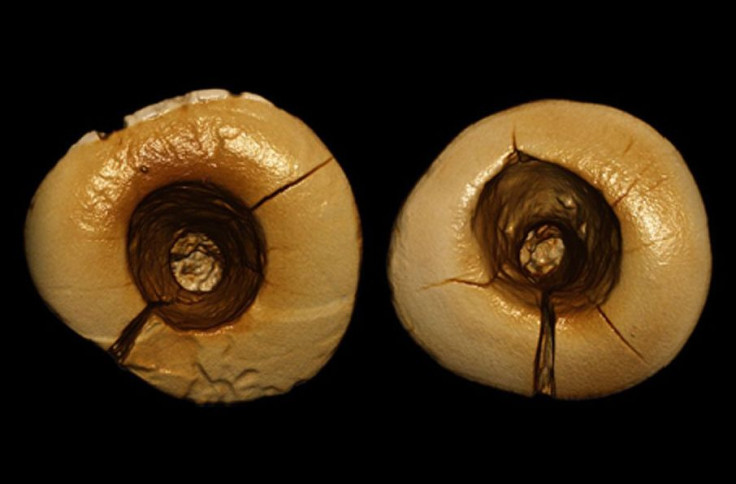Here’s How Painfully An Ice Age Dentist Filled Ancient Cavities

You think you hate going to the dentist? Try visiting one from the ice age.
Dentists have been around for thousands of years, and a trip to the earliest ones was both eerily similar to what it’s like today and terrifyingly different at the same time — based upon how one ancient human’s teeth were manipulated before he died. According to a study in the American Journal of Physical Anthropology, the remains of a hunter-gatherer found in Italy show that holes were drilled into two upper teeth, which were then filled with a tar-like substance.
Read: Ancient American Teen Had a Baby Before Falling to Her Death
The human, dubbed Fredian 5, is some of the earliest proof of dentistry, the researchers wrote. And it is unusual because this type of ancient medicine is mostly found in societies that produced their own food, because that change in diet from the days of hunting and gathering led to more dental issues.
It’s not just sugary sweets that cause cavities — as we chew nuts, grains and veggies, the carbohydrates in them turn to sugar and can rot teeth. Some cavemen mouths have shown signs of dentistry, with sharpened flints used to remove teeth or beeswax to plug holes in others.
In the case of Fredian 5, who is between 12,740 and 13,000 years old, his two first incisors, which are toward the front of the smile, were manipulated before he died. Scratch marks on the insides of the teeth are evidence of that dental work, the study says, which appears to have included holes drilled into them.
A report on Phys.org says the procedure to drill the holes with a sharp implement “would have almost certainly been very painful.”
According to the study, the cavities were then filled with a mixture of bitumen, straw and hair.
Bitumen is also known as natural asphalt and has a tar-like consistency. In ancient times it was used for many purposes, like preserving mummies and bonding together things such as bricks and weapons.
Although Fredian 5 is just one ancient human with evidence of dental work, but it’s unlikely he was the only one to visit the dentist, the researchers say.
See also:
Neanderthals Thought A Lot Like We Do
Fossil of Ancient Head Shows How Neanderthals and Humans Evolved
© Copyright IBTimes 2024. All rights reserved.





















